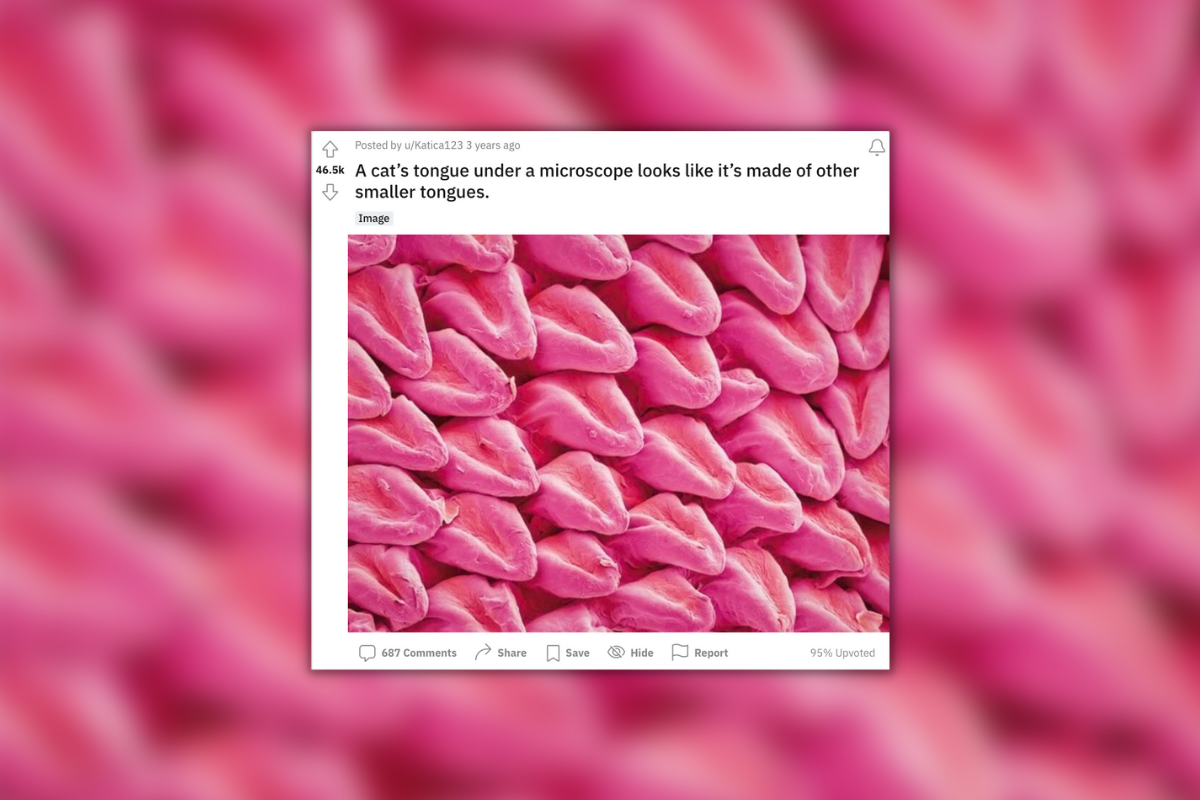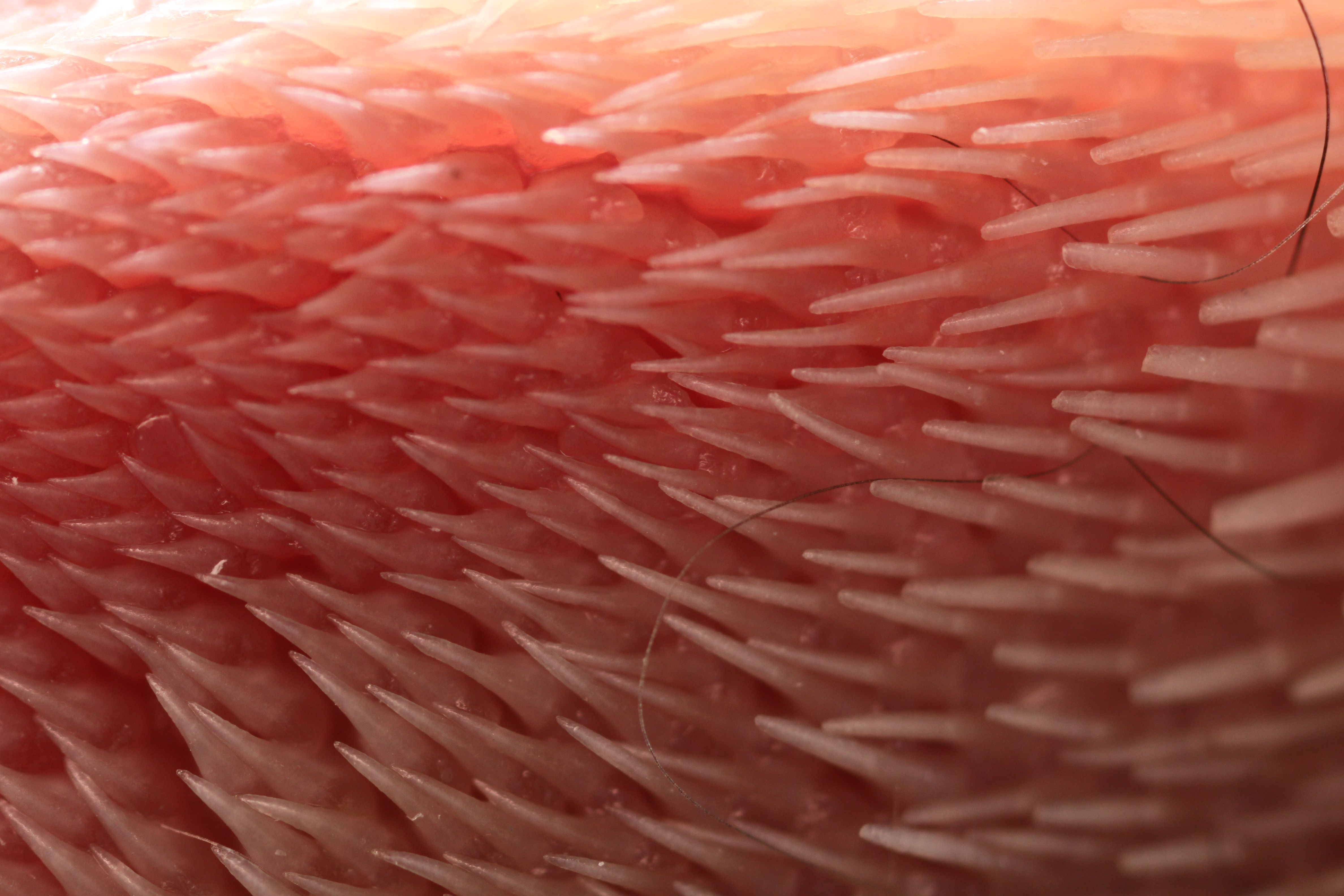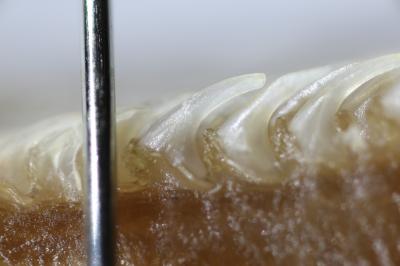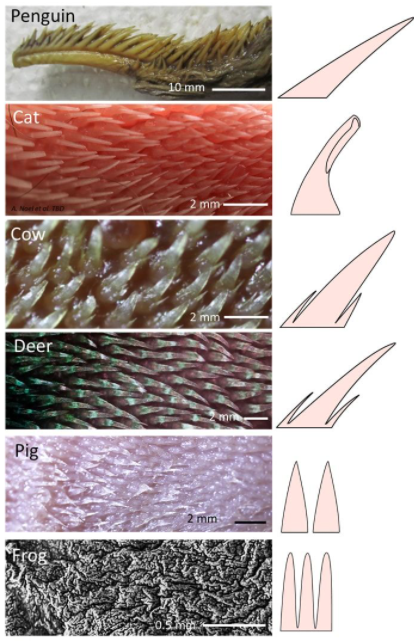Ever wondered what a cat's tongue looks like under a microscope? Neither have we, until we came across a widely shared social media post of a magnified cat's tongue that looks like, well, a bunch of little tongues all sewn together.
The image we're talking about first went viral in 2019 when it was shared to Reddit and received more than 46,500 upvotes. A caption accompanying the post read: "A cat's tongue under a microscope looks like it's made of other smaller tongues."
A reverse-image search on the search engine TinEye returned 76 results, one of which took us to the stock photography company, Science Photo Library. A description of the image showed that the version most shared on social media was more saturated than the original, but that the photograph was, indeed, authentic.
"The tongue is covered in many backward facing papillae (projections)," read the caption. "These tough structures are used to clean the cat's fur and to rasp meat from its prey."
A spokesperson for Science Photo Library confirmed to Snopes via email that the image is, in fact, authentic. It was taken by Stephen Gschmeissner, a known science photographer whose work has appeared in a number of peer-reviewed studies and news publications, including Nature, The New York Times, and Wired. According to his website, Gschmeissner is a scanning electron microscopist who began colorizing images of samples in the late 1990s.
In an email to Snopes, the Gschmeissner said that the "photograph was taken from a domestic cat tongue specimen provided by a colleague who is a vet."
The image was captured using a technique known as scanning electron micrograph (SEM) and was magnified at a rate of 15 when printed at 10 centimeters wide.
"SEM is a microscope that uses electrons instead of light to form an image. Since their development in the early 1950's, scanning electron microscopes have developed new areas of study in the medical and physical science communities. The SEM has allowed researchers to examine a much bigger variety of specimens," explains Purdue University.
"The SEM has a large depth of field, which allows more of a specimen to be in focus at one time. The SEM also has much higher resolution, so closely spaced specimens can be magnified at much higher levels. Because the SEM uses electromagnets rather than lenses, the researcher has much more control in the degree of magnification."
Gschmeissner said that the tongue was processed conventionally for SEM imaging, which included being "fixed, dehydrated, [and[ critical point dried coated in gold and photographed" in a type of SEM called a Field Emission Gun Scanning Electron Microscopy.
We also spoke with Alexis Noel, a research engineer at the Georgia Tech Research Institute, whose research explores how cats groom and has been published in the reputable science journal, Proceedings of the National Academy of Sciences. Noel looked at the papillae, or fine structures on the surface of a cat's tongue, under a microscope. She told us that cat papillae tend to be conical in nature, like the ones she photographed for her research:
This photograph below, which was also published as part of the study, shows a close-up of a slice of a cat tongue and the papillae embedded within the animal's tissue.
Noel noted that she has looked through the microscope at tongues belonging to cats, bobcats, cougars, lions, snow leopards and tigers — all of which appeared to look more conical in nature and not "tongue-like."
She also cross-referenced the image in question with the following animal tongues:
However, that discrepancy could be due to the different types of imaging equipment. Noel's research used a micro-computed tomography (micro-CT), a type of 3D imaging that uses X-rays to see inside an object, slice-by-slice, according to Micro Photonics Inc. It's like a CT scan but on a much smaller scale. A study that evaluated different types of scanning devices reported that SEM can reach magnifications of up to 1,000,000 times while light microscopy has a resolution of 1,000 times.
If you enjoyed this feline-friendly story, you might also enjoy the following:
- Watch: Cat Demonstrates Proper Way To Use a Crosswalk
- Do Cats Sit on Laptops To Be Closer to You?
- Should You Bang or Honk to Save Cats Sleeping on Tires?
- 'Stop Cuddling With Your Cat,' Misleading Ad Claims




